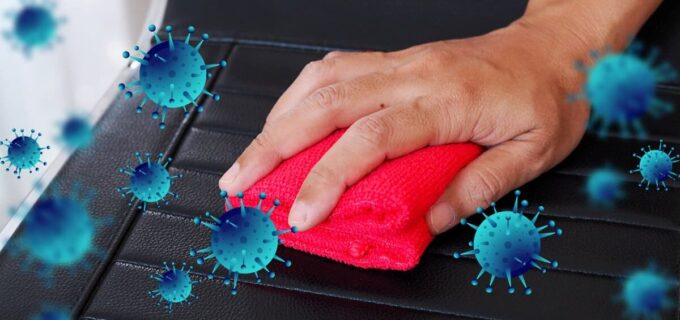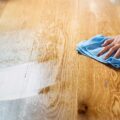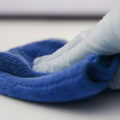When the SARS-CoV-2 pandemic began in early 2020, there was a sudden increase in public education on the importance of personal hygiene. Governments ensured that the public understood that through good hygiene, it would be possible to slow and even stem the spread of COVID-19. Hand sanitisers and disinfectants became commonplace in homes and workplaces. Experts also started to suggest frequent washing of masks as they provided an ideal environment for microbes to thrive on and could end up carrying the pathogens on the surface.
With all these changes in personal hygiene, there has been very little light shed on towels. Used by many after washing their hands in the toilet and also commonly used in kitchens as washcloths. A survey of sponges and dishcloths in kitchens revealed that almost all had some form of bacteria growing on them, aerobic bacteria (93%), Enterobacteriaceae (88%), and S. aureus (11%). They were also found to have the greatest concentrations of the above bacteria compared with any other location in the kitchen. Many then use these cloths that were used on dishes and clean countertops and common areas in the kitchen, spreading pathogens all over various surfaces that commonly come into contact with foodstuff. It is easy to see how bacteria can rapidly spread in a kitchen through cross-contamination.
90% of bathroom towels were contaminated with coliform bacteria and about 14% carried E. coli. Drying your face or hands using these hand towels would expose you to more E. coli than exists in a toilet bowl and puts you at risk. Generally, these bacteria would remain at the surface of the skin and have little effect on our health, but if there are any cuts or abrasions on the skin, bacteria can easily enter the body and infect us.
Why do bacteria grow so readily on these towels?
Kitchen washcloths and bathroom hand towels are two pieces of cloth that are generally used more than once a day, exposed to varying levels of moisture, and then stored again until required. The warmth of bathrooms and kitchens combined with the dampness of the cloth allows for bacteria to proliferate rapidly and then transfer to the hands and surfaces onto which the cloth is wiped on. Wet hands transfer microbes more readily than dry hands and, although drying hands on a clean towel can help remove microbes by creating friction, the use of contaminated cloth can compromise the benefits of handwashing.
What can we do to keep ourselves safe?
Minimally, towels need to be washed once every two days. However, regular detergents will not be able to rid the towel of all the bacteria. It is important to soak the hand towels and washcloths in hot water and activated oxygen bleach to thoroughly clean the towels. Alternative ways are to hang the towel out in the sun. The Sun naturally produces UV-C rays that kill bacteria on the towels and act as a natural bleaching agent. Furthermore, complete drying of the towel will also cause cell death of bacteria that are UV-resistant as they will need moisture to survive.

The downside to using bleach or the Sun to clean our towels is that they will eventually cause the colours in the towels to fade, looking old and worn. The alternative to these methods is to use anti-microbial towels such as BRProtect Anti-Microbial Microfibre Cloth. Whilst these towels will need laundering to ensure continuous disinfection, there is no need for high temperatures or bleaching agents. This saves money in frequent laundering and also ensures that you have peace of mind whenever you use a towel be it on your dishes or to wipe your hands.




